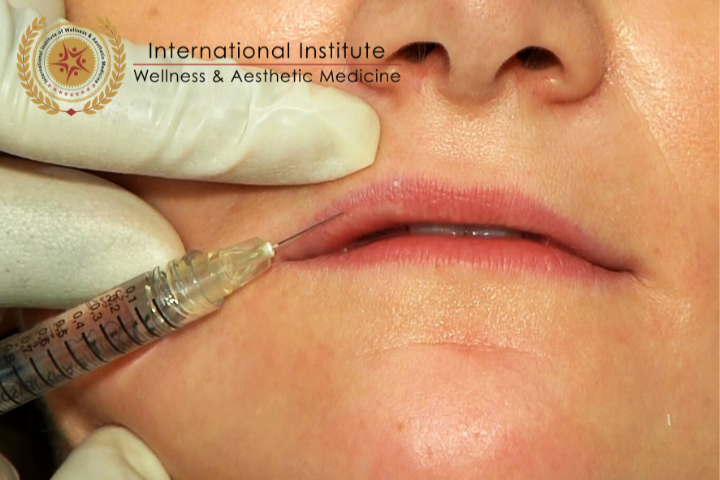Difference Between Permanent And Temporary Fillers
In today’s article, Prof Dr Morthy, the Course Director of International Institute of Wellness & Aesthetic Medicine will discuss the differences between permanent and temporary fillers.
About temporary fillers
Temporary fillers are biodegradable, biocompatible, and 100% natural injectables. They are injected beneath the skin to restore volume, smoothen lines, soften creases, or enhance the overall facial contours. The most commonly used temporary and reversible fillers are made from cross-linked hyaluronic acid (Teosyal, Juvederm, Restylane, Belotero, etc). With advancements in medical science and technology, some fillers can last around twelve months.
Temporary fillers help reduce the appearance of age lines and wrinkles by augmenting the soft facial tissues and stimulating the body’s natural collagen production over time. This helps to restore an overall youthful, rejuvenated appearance with minimal downtime.
Temporary fillers are suitable for patients who simply want to fill in areas of noticeable volume loss or smoothen fine lines and wrinkles on their faces.
Pros and cons of temporary fillers
As mentioned earlier, temporary fillers have the ‘inbuilt reassurance’ that you can reverse them using hyaluronidase. This can dissolve the filler inside the artery and potentially recover that blood supply. Since they are made from a natural bioengineered substance of your body, there is less risk of developing granulomas, which is a risk factor with permanent fillers.
Unlike permanent fillers, using temporary fillers for small areas such as the nose can be problematic. If more than the required amount of filler is injected, then there is an increase in the risk of blindness.
About permanent fillers
The most common type of permanent filler, PMMA or Bellafill, is an injectable collagen dermal filler bovine in origin (sourced from calves). It consists of non-resorbable microspheres of polymethylmethacrylate (PMMA) that act like a scaffold and provide structural support to the skin. The permanent filler contains a small amount of local anesthetic, lidocaine, to provide comfort during the injection treatment.
Pros and cons of permanent fillers
The biggest advantage of permanent fillers like PMMA Bellafill is that they are considerably more long-lasting than temporary fillers like hyaluronic acid injections. The results from a permanent filler treatment can last as long as 5 years.
When it comes to permanent fillers, there is no room for error. It takes twice as long to inject permanent fillers compared to temporary fillers. Conducting permanent filler treatment in a sterile environment is extremely important as they are more susceptible to complications if germs are introduced. This is because, unlike temporary fillers, they are manufactured from substances not naturally found in your body.
Also, once you have had permanent filler treatment, you cannot mix it with temporary fillers because of the risk of developing an infection or complications, including sequelae. It’s also important to note that permanent fillers aren't appropriate in technically difficult areas of the face like the tear trough.
About IIWAM training
It is prudent that all Aesthetic practitioners undergo proper training in Aesthetic Medicine. The practitioner must balance between benefits & risks of the Aesthetic procedure and steps to mitigate complications if it occurs. At IIWAM, we call it understanding the procedure, the product, and the patient, and our trainers pay utmost attention to teaching the following subjects of various aesthetic treatment procedures under the best Online Botox and Filler Training courses.
-
What is the skin anatomy?
-
What are the principles of the temporary fillers injection procedure?
-
What are the principles of the permanent fillers injection procedure?
-
Which temporary filler would work best for a skin rejuvenation treatment procedure?
-
Which permanent fillers would work best for a skin rejuvenation treatment procedure?
-
What are filler injection complications?
-
How to avoid filler injection complications?
Apply for the best online aesthetic courses from IIWAM today.
About IIWAM Aesthetic Education
International Institute of Wellness & Aesthetic Medicine (https://www.iiwam.ac/education) is a private teaching institution that provides International Aesthetic Medical Certification programs for Doctors, Dentists, Nurses, Aestheticians, and Spa Owners. Prof Dr Morthy, the course director for the Institute, is a key opinion leader for Aesthetic Medicine in the region, and a trainer for several teaching institutions.
The International Institute of Wellness & Aesthetic Medicine (IIWAM) has academic affiliations with several countries, including Malaysia, Korea, Thailand, Philippines, Myanmar, Cambodia, India and Indonesia. With our insignia of “Be Certified & Be Recognized”, the Institute develops knowledgeable, skilled, and confident aesthetic practitioners of international repute.
IIWAM is the only Institute to have its Programs certified by City & Guilds of London, CPD Standards Office (UK) and European International University (Paris). IIWAM is also a registered CPD Training provider for Malaysian Medical Association.
IIWAM also offers Cosmetic Procedures and Stem Cell treatment at IIWAM Wellness Centre (https://www.iiwam.ac/wellness) that are safe, effective, and affordable.

